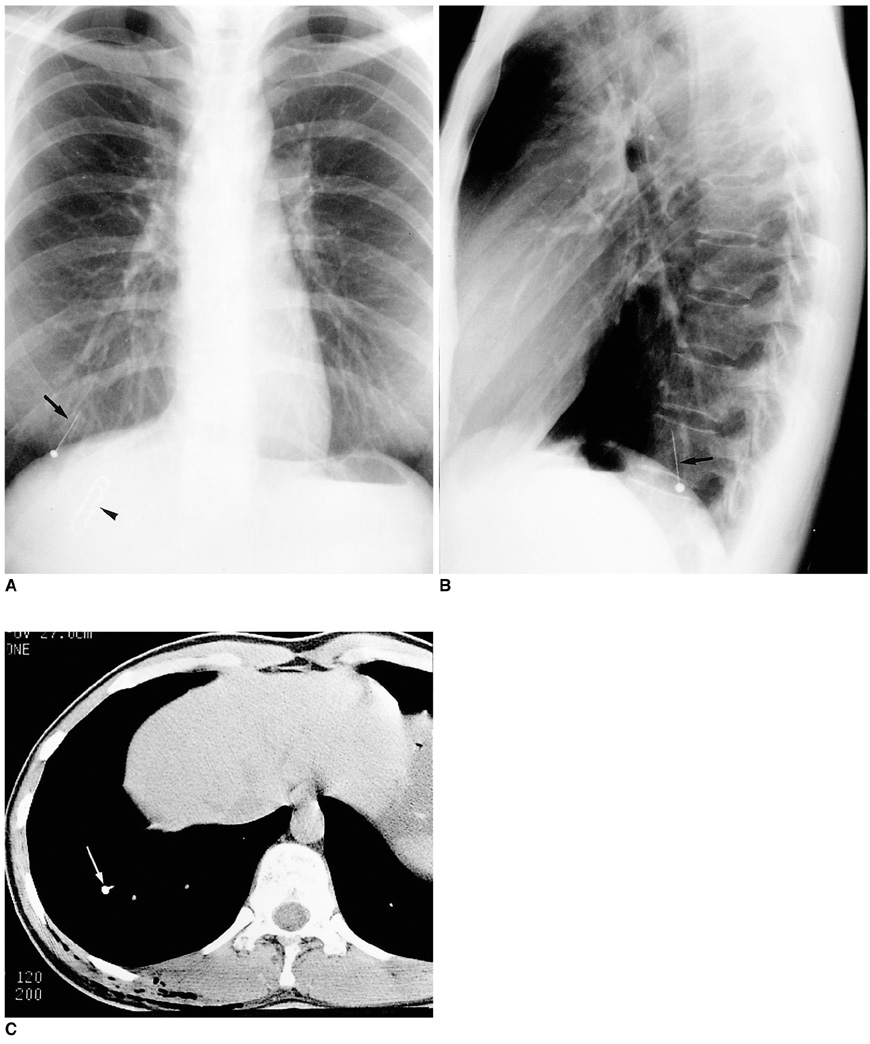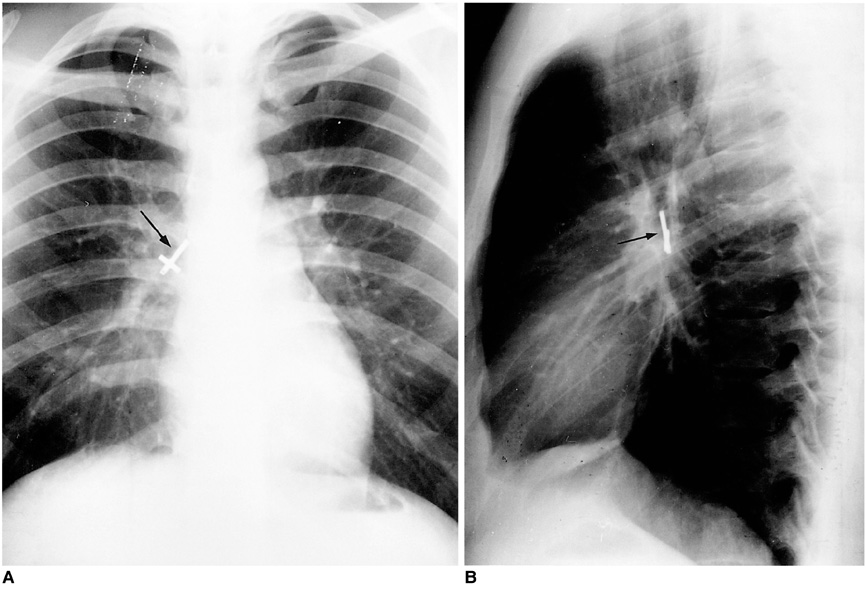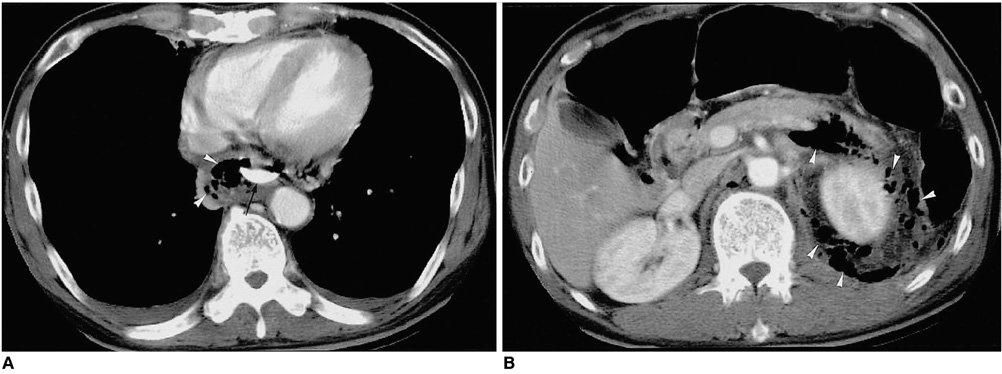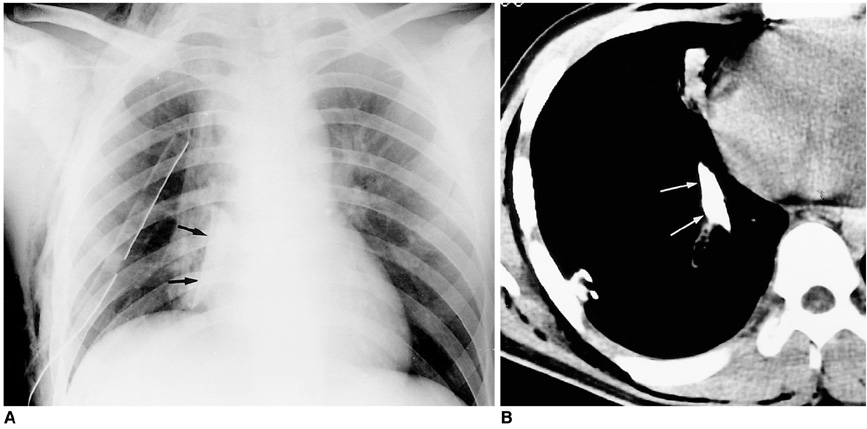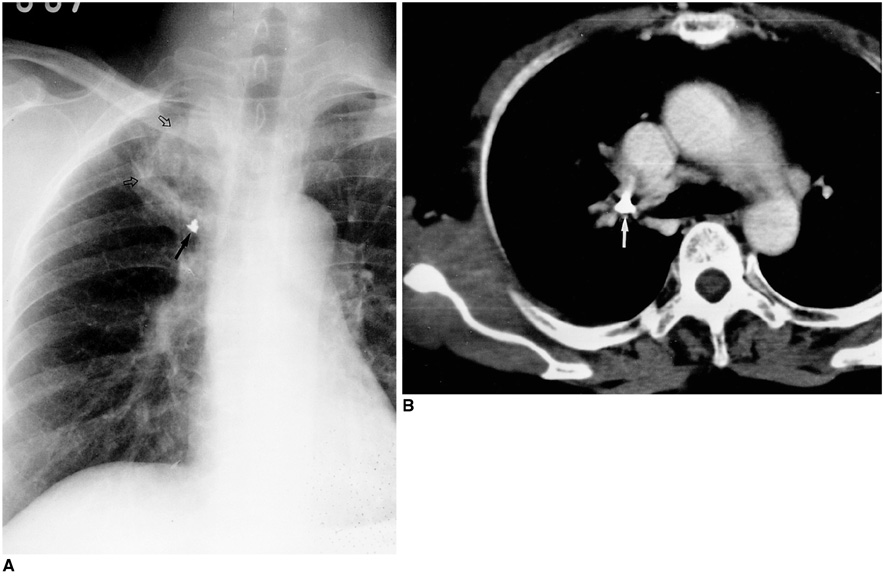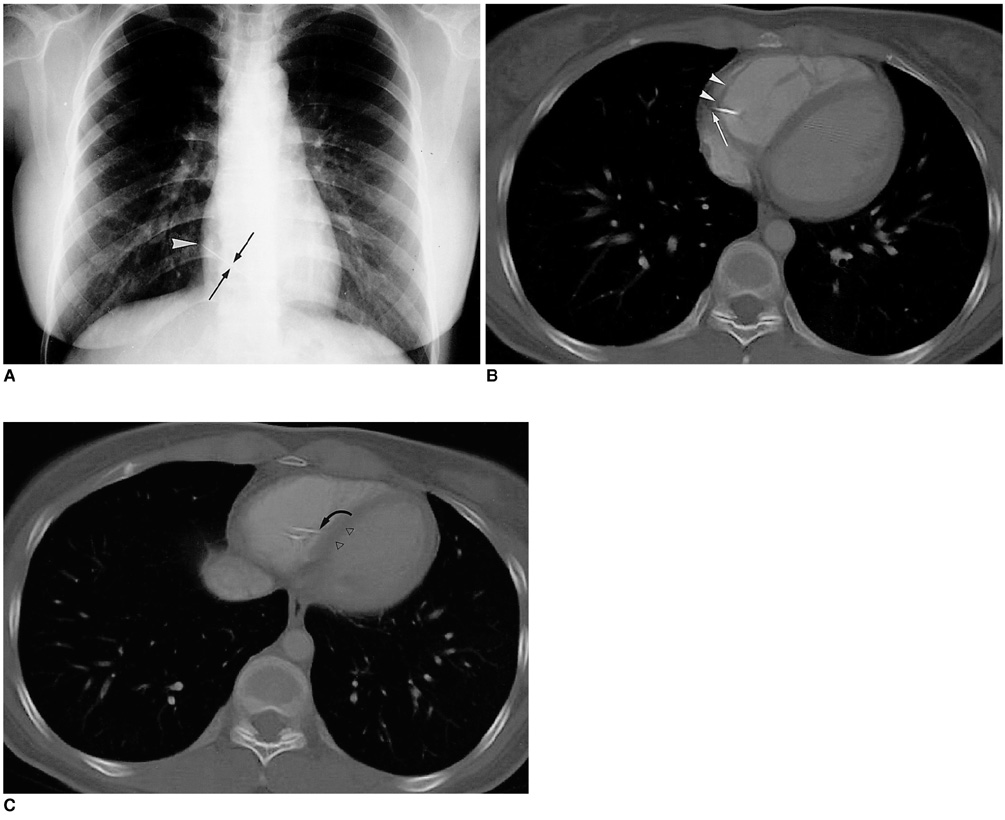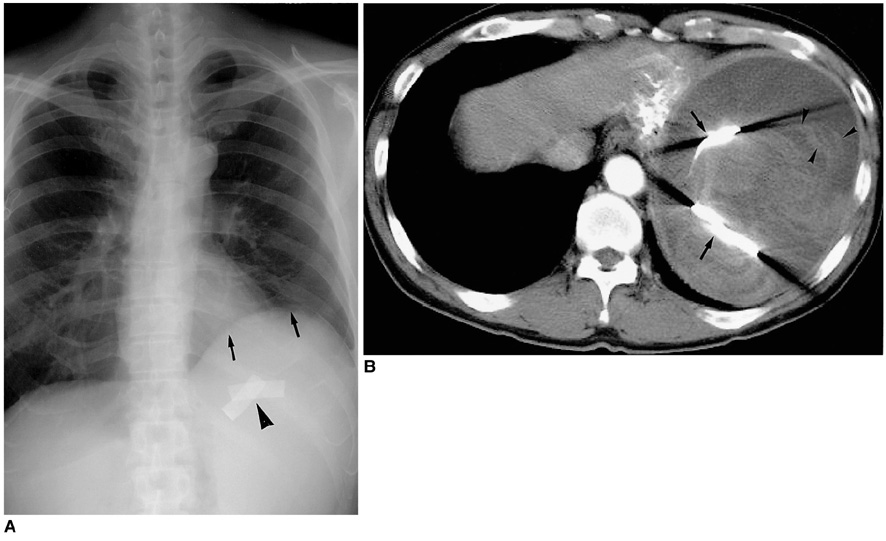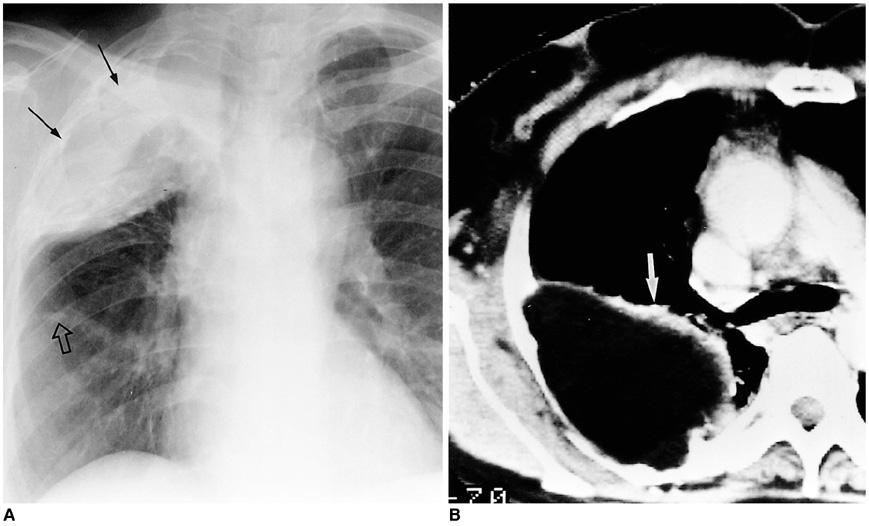Korean J Radiol.
2001 Jun;2(2):87-96. 10.3348/kjr.2001.2.2.87.
Foreign Bodies in the Chest: How Come They Are Seen in Adults?
- KMID: 754110
- DOI: http://doi.org/10.3348/kjr.2001.2.2.87
Abstract
- The radiologic and clinical findings of foreign bodies in the chest of children are well recognized. Foreign bodies in adults are infrequent, however, and the radiologic findings of these unusual circumstances have rarely been described. We classified various thoracic foreign bodies into three types according to their cause: Type I, Aspiration, Type II, Trauma or Accident; Type III, Iatrogenic. This pictorial essay will illustrate the radiologic findings and consequences of thoracic foreign bodies in adults, which have rarely been described in the radiologic literature. The clinical significance of thoracic foreign bodies will be also be discussed.
Keyword
MeSH Terms
Figure
Reference
-
1. Baharloo F, Veykermans F, Francis R, et al. Tracheobronchial foreign bodies: presentation and management in children and adults. Chest. 1999. 115:1357–1362.2. Limper AH, Prakash UB. Tracheobronchial foreign bodies in adults. Ann Intern Med. 1990. 112:604–609.3. Peter VK, Andrew CM, Nelson LM. Thoracic foreign bodies in adults. Clin Radiol. 1999. 54:353–360.4. Donnelly LF, Frush DP, Bisset GS 3rd. The multiple presentations of foreign bodies in children. AJR. 1998. 170:471–477.5. Kim WT, Yoo SY, Shin HJ, Kim JR. Squamous cell carcinoma associated with chronic empyema caused by metallic foreign body: a case report. J Korean Radiol Soc. 2000. 42:91–94.6. Jamilla FP, Casey LC. Self-inflicted intramyocardial injury with a sewing needle: a rare cause of pneumothorax. Chest. 1998. 113:531–534.7. Choi BI, Kim SH, Yu ES, et al. Retained surgical sponge: diagnosis with CT and sonography. AJR. 1988. 150:1047–1050.8. Vigneswaran WT, Ramasastry SS. Paraffin plombage of the chest revisited. Ann Thorac Surg. 1996. 62:1837–1839.9. Imray TJ, Hiramatsu Y. Radiographic manifestations of Japanese acupuncture. Radiology. 1975. 115:625–626.10. Johnson A. Voice restoration after laryngectomy. Lancet. 1994. 343(8895):431–432.
- Full Text Links
- Actions
-
Cited
- CITED
-
- Close
- Share
- Similar articles
-
- CT Findings of Foreign Bodies in the Chest: A Pictorial Essay
- A case of obstructive pneumonia due to fish vertebrae aspirated into both bronchi
- Fiberoptic bronchoscopy for removal of endobronchial foreign bodies in adults
- Esophageal Foreign Body: Treatment and Complications
- Foreign bodies in maxillofacial region

